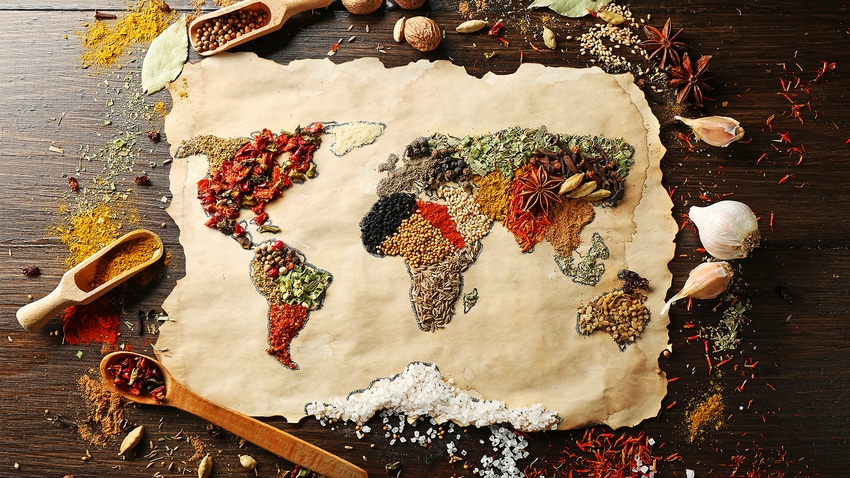Unlocking future trends: Curious Plot reveals insights for food and beverage brands
The company’s new Consumer Curiosity Report, which surveyed more than 700 food-forward consumers, uncovered future culinary, nutrition and sustainability trends.

At a Glance
- By studying interests and behaviors, the report predicts culinary shifts like DIY cooking and global flavors.
- It also reveals unmet needs and marketing opportunities for brands to effectively connect with consumers.
- Using data and real-world examples, the report guides marketers to prioritize investments and develop relevant campaigns.
Every year since 1999, Pantone Color Institute consults a mix of forecasting tools, psychological research and old-fashioned observation to select a “color of the year” that it predicts will set the visual tone for the coming 12 months. For 2024, the institute is putting its money on Peach Fuzz.
“What if we could predict the 2025 or 2026 color of the year?” Amy Wood, SVP of food strategy at Curious Plot, a Minneapolis-based marketing, communications and consulting firm active in the food sector, said. “Think how that would help creatives and designers prioritize future investments and projects.”
Better yet, think how gazing that far ahead might help brands in the food and beverage industry prioritize their R&D efforts as well.
That’s precisely what Curious Plot did with its inaugural Consumer Curiosity Report, a national survey of more than 700 food-forward consumers aimed at identifying culinary, nutrition and sustainability trends before they happen so marketers can target their time and resources toward success.
Getting curious
It’s no surprise that Curious Plot would take on this challenge. “The inspiration behind the report is woven into our agency’s DNA and culture,” Wood explained. “We’re inherently curious, so we created this study not only for ourselves, but for all food marketers.”
The payoff was undeniable. “We saw a big opportunity to better understand how today’s curiosities will influence tomorrow’s trends, and it’ll help our clients better understand them, as well,” Wood said. “As we like to say, ‘We don’t just follow trends; we set them.’”
That forward-leaning stance is rare in an era that rewards caution and bottom-line thinking. “Too often, companies simply respond to consumer trends instead of taking an active role in nurturing or advancing them,” she added.
And that’s where curiosity comes in. “The more we understand consumer curiosities, the better we can help our clients prioritize and make proactive investments to propel and even own a trend,” Wood said.
Finding the trendsetters
The calculus is simple: “Curiosities become actions, and actions become trends,” according to Wood. Thus, the team at Curious Plot set out to discover where those curiosities lie and what energizes them.
They did this by building a food-focused survey that “goes deep into the mindset exclusively of early food adopters,” which Wood said are “individuals on the leading edge of new trends.”
After screening thousands of consumers across generations and geographies, the company found a cohort optimized for their trendsetting verve: a keenness to try new foods, voracious consumption of food and drink news and social content, avid sharing on social media and frequent patronage of restaurants and culinary events.
“These are the consumers who brought us avocado toast, made mushrooms ‘it’ ingredients on menus and pulled air fryers and Instapots into the mainstream,” Woods explained. “Now, this study gives insight into where their minds, their scrolling thumbs, and their grocery and restaurant purchasing dollars are taking us into the future.”
The takeaways
Overall, those insights suggest a future focused on DIY cooking, global flavors, sustainability and multifaceted functional ingredients.
Take the cooking findings, for instance. In an overscheduled and inflationary world, “an endless appetite for cooking skills and tips” offers consumers a practical hedge against the pressures, Wood said. In fact, respondents’ “level of curiosity for the basics” actually surprised her and the team.
To wit, the majority (86%) of those surveyed wanted to learn new cooking skills and tips—with younger generations much more curious than older—while a similar contingent (85%) expressed curiosity about cooking easy meals in less than 30 minutes. The lesson Wood draws is that “even the most food-forward consumers are still eager to learn and experiment. In the open-ended responses, we heard over and over that people simply want to try new foods and recipes.”
When they do, they’ll likely venture into international culinary waters to find them. That’s because whether respondents hailed from Gen Z or the Boomer era, the percentage claiming curiosity around cooking new global flavors and cuisines clocked in at a healthy 78%, with the highest curiosity directed at Asian traditions like Chinese and Thai. “This tracks with Datassential’s recent research that shows America’s favorite ethnic foods are changing, especially among younger consumers,” Wood noted.
The desire to nurture the planet by shopping sustainably also proved prevalent, with Gen Z over-indexing in their curiosity about reducing food waste and choosing climate-friendly foods. This reflects an individual drive to make a difference, Wood added, indicating that despite their interest systemic solutions like regenerative agriculture, “respondents’ curiosity is so much higher for the things they can personally impact, such as reducing food waste.”
As the line between healthy and happy blurs ever further, expect food-forward consumers to pursue both physical and mental wellness through functional foods. As Wood puts it, “Consumers increasingly expect more from their food—flavor, nutrition, mood and more.” More than half (63%) of respondents expressed curiosity about mood-boosting foods.
Been here before
Granted, if these findings evoke a certain sense of déjà vu, there’s good reason why. “Sometimes as marketers, we’re eager to reinvent or move on from a trend or topic,” Wood said. “But this study reminds us that consumers often hang onto a curiosity for years, and just because we’re ready to move on, mainstream consumers may just be joining the conversation.”
What’s more, the persistence of these curiosities “exposes unmet needs and marketing opportunities,” according to Wood. She suggested brands inventory how well they actually know their target audiences’ curiosities and evaluate whether or not their efforts actually speak to those curiosities with meaningful information and inspiration. “Focus on meeting the curiosities that matter most to your audiences,” she said.
News you can use
That’s certainly the counsel Curious Plot will offer their roster of brands. “The research is already informing our client campaigns,” Wood explained. “For example, we took to heart the report’s finding that even food-forward shoppers want simple, easy recipes and applied that right away to a digital marketing campaign that earned double year-over-year results on the same budget.”
Those are impressive returns and the hope is that future reports will yield more. “We very much consider this report a benchmark and will update it annually,” Wood said. The firm is already conceptualizing the 2024 iteration and aims to expand the questions and topics under consideration to gain even more granular insights.
“We’re also planning 2024’s Curious Food Leadership Forum,” Wood said, previewing it as an event where the nation’s senior-food industry marketers and trendsetters will gather for two days of tasting, sharing and ideating around the next trends in food marketing. Not coincidentally, it’ll also be where Curious Plot unveils that 2024 Consumer Curiosity Report.
About the Author(s)
You May Also Like






